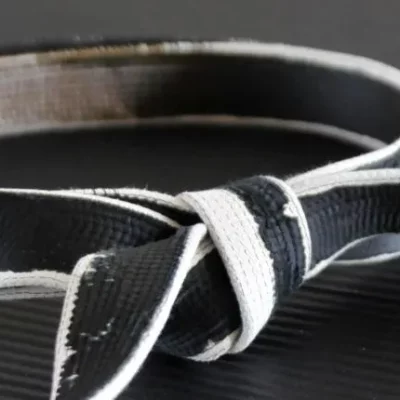The other day we had a guest in class who happened to be Japanese. He spends lots of time with his family in Japan and so is fluent. I always like to talk with native speakers since it helps me improve my Japanese which is…well…less than perfect. But I try to incorporate as much Japanese into my class as possible, so I was extra mindful of what I was saying in our guests native tongue.
We came to a technique called Uranami (浦波) which I was always told was “Inner Waves”. He then announced me that that was incorrect: “It actually means back or backwards wave.” I was a bit taken back, and I started to ask about ura and omote: “Depending on the context it means front and back – so Omote is the front of the hand (knuckle side), and Ura is the back (palm side).”
And it made sense, both in context of the technique, and in terms of the Torite Waza. Could it be possible that such a large swath of the Bujinkan community – foreigners at least – have gotten this wrong? Every translation I’ve seen refers to Inner or Inside; has no one checked?
It reminded me when we had a Judoka teach a seminar who was fluent in Japanese. He was talking about kote gaeshi and asked how we referred to it:
“We call it omote gyaku” I said.
He looked puzzled and asked “one hand reverse?”
“Outer reverse.”
“Huh, that sounds like it was made up by a non Japanese speaker. Omote means ‘one hand’.”
Yes it does, but it also means outside. And surface. And table. This reveals some of the challenge of Japanese and it’s inherent ambiguities, since one word can have so many meanings.
It turns out the Japanese guest was right (of course – he’s fluent in the language), as were those other translations I’ve seen in the Bujinkan (of course – someone would have picked up on such a common and basic term being totally wrong by now). Yet – none of them are really correct at all. Let’s look at the term “Ura” and the kanji using good ol’ Google Translate:
The most common usage for the kanji 浦 is “back” or “backwards“. However, it can also mean:
- Reverse Side
- Sole
- Lining
- Inside
- Wrong Side
- Under-surface
- Palm
- Last Half
Japanese is a very contextual language – words take on meaning depending on the context of use. So technically Ura means all of these, and somewhere between these.
English on the other hand is much more specific; inside means inside and palm means palm. So when things get translated to English some of the subtle nuances get lost when one thing is “picked” to be the meaning.
If we look at a technique that has Ura in it, we can compare it to these different ideas and see which ones are closer, and even where they overlap. In the case of Uranami (from Koto Ryu) we see several make sense:
- Backwards
- Reverse-side
- Inside
- Under-surface
Rather than pick the right one, each of these meanings fit and even add depth to our understanding of the technique:
- The technique hook kicks behind the knee, like a backwards moving wave
- The kick uses the heal to hit the back – or reverse side – of the knee
- The kick pushes the knee to the inside, like a wave moving inward to their center-line from an edge
- The primary counter attack happens to the knee, like something happening under the surface of a wave
Rather than being exclusionary definitions, they add perspective and meaning to different aspects of the technique. Some interpretations are more linguistically common, while others are more inherent to the context of the technique.
However, by embracing the ambiguity and nuances in the names of the techniques, you can understand them more holistically – as well as improve your understanding of Japanese as well. Each subtle shift in meaning reveals something different and insightful about the technique.
I think this may be way Soke likes playing so much with kanji and translations – a lot of meaning can be found with a little interpretation.
Get new content straight to your inbox, gain deeper insights into Japanese Martial Arts, and get exclusive offers by joining the Todai Clan!






